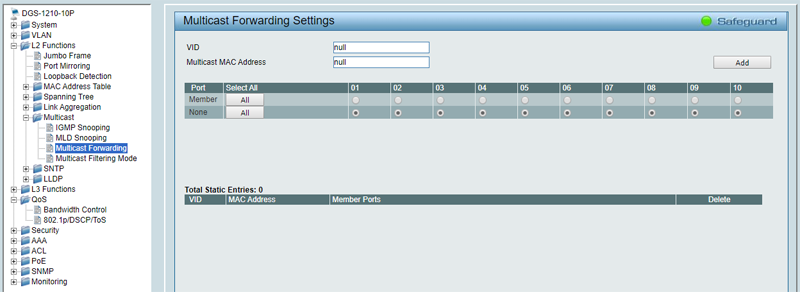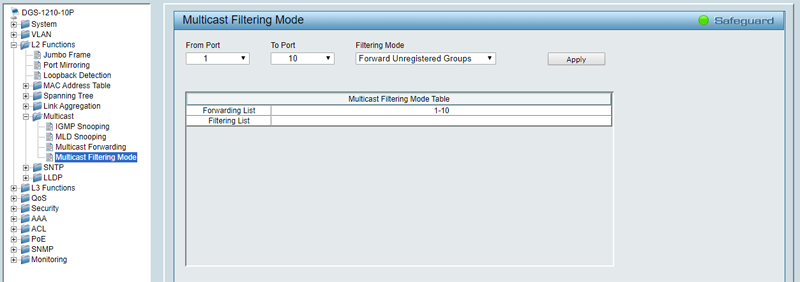The following guide is designed to help you configure your D-Link DGS-1210 network switch for Dante and AES67 networks.
Before You Begin
- Ensure that you have a D-Link DGS-1210-series switch.
- Decide how IP Addresses will be managed. It is fine to use DHCP (e.g., from a Crestron server), Static, or Self-Assigned addresses. If you are using Static IP Addresses, create a spreadsheet to keep track of each device's address. We have included a sample spreadsheet at the end of this document. We suggest tracking the device make, model, MAC Address(es), IP Address(es), firmware version, date purchased, and date installed. Include your switch in the list.
- Update your switch to the latest firmware available from D-Link.
Configuring a D-Link DGS-1210 Switch for Shure Dante Devices
- Verify that your DGS-1210 is Hardware Version F1 and is running firmware 6.10.007 or later. Older versions (such as C1) do not function correctly and are not supported.

- Go to System > System Settings. Assign the switch an IP Address in your Dante subnet, set the correct Subnet Mask (Netmask), and set the gateway to 0.0.0.0 if this is an isolated network. Apply changes and reconnect to the switch if needed.

- Go to System > IEEE802.3az EEE Settings. Verify that IEEE802.3az is disabled for all ports.

- Go to L2 Functions > Multicast > IGMP Snooping Configuration. Configure the screen as shown in the screenshot. In particular, the IGMP Snooping feature must be enabled, and the Query Interval should be set to 60 sec.

- Click the link under VLAN ID for your VLAN ("1" as shown in our example). Enable the State and Querier State options. Fast Leave can remain disabled. Uncheck all ports under Static Router Ports.

- Go to L2 Functions > Multicast > Multicast Forwarding. Remove any static entries, unless required by another manufacturer.

- Go to L2 Functions > Multicast > Multicast Filtering Mode. Ensure all ports for Shure devices and the PC running Dante Controller are listed in Forwarding List.

- Go to QoS > 802.1p/DSCP/ToS. Set Select QoS Mode to DSCP, Queuing Mechanism to Strict Priority, and configure the table to look like the screenshot below with DSCP 56 set to Priority 7, DSCP46 set to Priority 6, DSCP34 set to Priority 5, and all other DSCP values set to Priority 0.

- The switch is now configured. Save the settings and create a backup.
Verifying Your Work
- Connect all of your Shure devices to the network switch, and if necessary, assign them a Static IP address.
- Open Dante Controller and ensure all devices appear under the Device Info tab.
- Verify that only one device is the Leader Clock on the Clock Status tab. All other devices should say Follower. If you are using AES67, we generally recommend that the same device serve as both the Dante and AES67 Leader Clock.
- Open Shure Update Utility, and configure it to use your Ethernet adaptor. Verify that all devices appear in the list, and are on the latest firmware.
- Route your audio as desired, and ensure it is working correctly.



